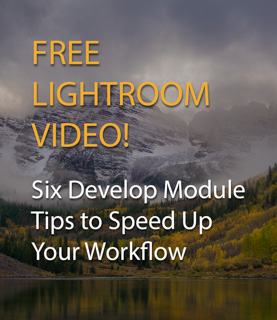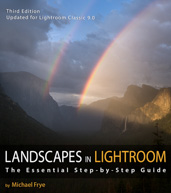by Michael Frye | Jun 17, 2011 | Critiques
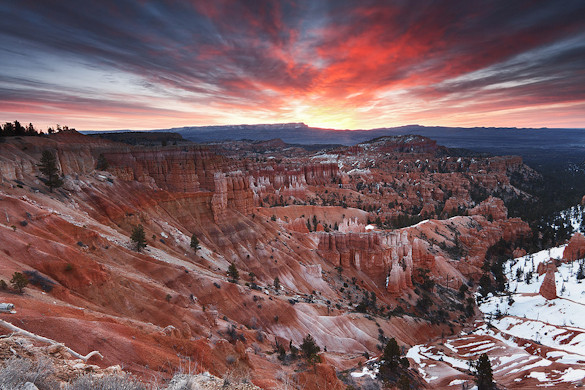
"Sunrise From Sunset Point" by Raymond
The critiques are back! With my trip to Utah, and then having to restore the blog, it’s been awhile, but I’m happy to be able to present another photo critique this week, and I hope it won’t be so long until the next one. Thanks for your patience!
Light
This week’s photograph was made by Raymond in Bryce Canyon National Park, Utah. Perhaps the most striking feature of this image is the colorful sky, with clouds appearing to radiate out from the sun just before it clears the horizon. The warm hues of the red-orange clouds, along with the rusty rocks, form a nice color contrast with the cool blues of the sky and distant mountains.
Composition
What I like most about this composition is how the foreground and background complement each other. Those radiating lines in the clouds are subtly echoed by the folds in the landscape below.
Raymond said, “I found the scene to have many things going on—the snow, the hoodoos, the colored bands across the canyon sides, the ridges running down the sides, etc. In circumstances like that I find it difficult to feel “sure” of how the elements are arranged. I basically placed the horizon at the one-third point and placed the sun at the left/right midpoint. With my fingers crossed, I was hoping the colored bands would help lead the eye into the distance and the canyon’s bowl-like shape to cradle the elements of the scene.”
(more…)
by Michael Frye | Jun 9, 2011 | Photography Tips
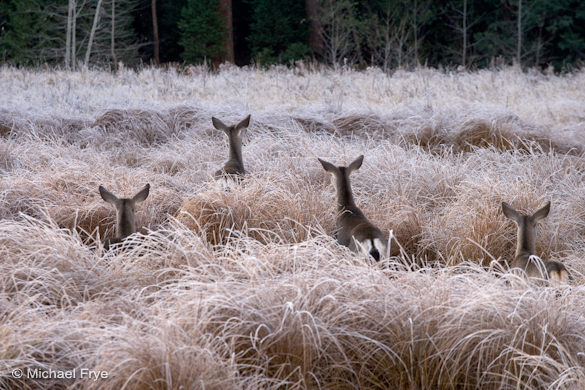
Sometimes it's easy to pick the winners—they just jump out at you, like this image did when I first saw it on my screen. But usually editing is a more difficult task.
First of all, thanks to everyone who commented on my post from last Friday. Your participation is such a vital part of this blog, and makes it more fun for me, and everyone else.
Of the three dogwood images I posted, “C” was clearly the favorite. But there were some strong votes for A and B as well. Just another example of how subjective photography is!
It’s also an example of how difficult it can be to edit your work. When I ask students to bring a portfolio of ten images to a workshop, they often tell me how hard it was to narrow it down to such a small selection. Many have never had to do that before.
But editing—and I mean this in the traditional sense of selecting images, rather than processing or developing them—is one of the most important aspects of photography.
(more…)
by Michael Frye | Apr 7, 2011 | Digital Photography Basics, Photography Tips
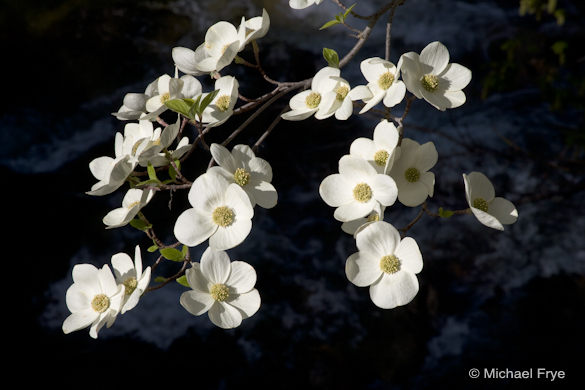
Most camera's light meters would read the dark areas in the background and overexpose these dogwood blossoms. To correct for this, you need to either override the meter with exposure compensation, or adjust the exposure manually.
In the first part of this series I explained one of the most fundamental aspects of digital photography: reading histograms. In this edition I’ll delve into the next step: how to adjust the exposure when the histogram doesn’t look right the first time.
(more…)
by Michael Frye | Mar 27, 2011 | Announcements, Photography Tips
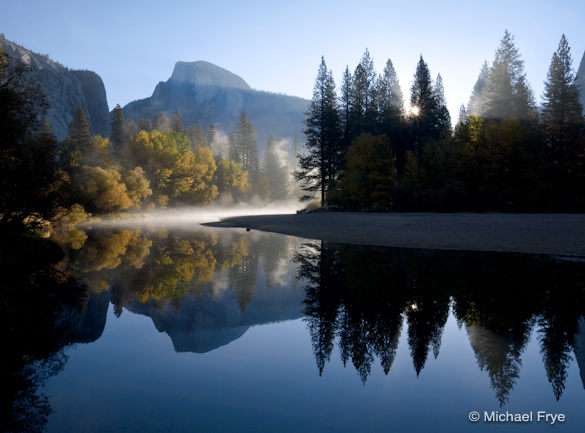 Autumn Sunrise, Half Dome and the Merced River
Autumn Sunrise, Half Dome and the Merced River
How do you give your photographs impact? How do you convey the grandeur of the landscape in a small, two-dimensional image? You have to find your focus. I’m not talking about turning the ring on your lens—I’m talking about focusing your composition on the essentials and finding a strong design.
My latest article in Outdoor Photographer magazine discusses exactly how to do that. Titled Find Your Focus, it shows you how to communicate your vision by simplifying, finding focal points, creating depth, and looking for patterns. The article is scheduled for the May issue, due out next month, but it’s already on the OutdoorPhotographer.com website—a sneak preview. I hope you enjoy the article!
by Michael Frye | Feb 3, 2011 | Digital Photography Basics, Photography Tips
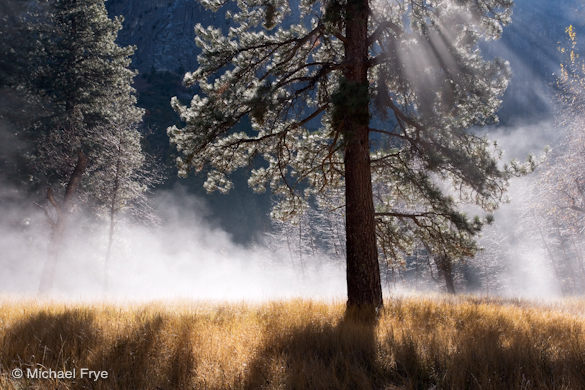
Understanding how to read a histogram is the best way to judge exposure in high-contrast scenes like this.
With film, exposure always involves some guesswork—you can never be sure you made the correct exposure until you develop the film. But with digital cameras you can tell immediately whether the right amount of light reached the sensor by looking at a histogram. This ability to instantly evaluate exposure is a game changer—the single biggest advantage of digital photography over film.
But many photographers are still guessing about exposure because they’re unable to decipher the histogram’s cryptic messages. Instead they judge exposure by how bright the image looks on their camera’s LCD screen. But while those little screens are extremely useful for many things, evaluating exposure isn’t one of them. There are too many variables: screen quality (usually bad), the LCD brightness setting in the camera, and the amount of ambient light.
(more…)






